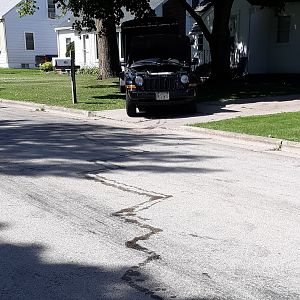Okura_hubby
Full Access Member
Actually, the #2 is only partially correct and #6 is incorrect.
More airflow simply mean your computer adds more fuel (more power, but not better gas mileage). This idea goes back to the old carburated days when there was no computer that meticulously monitored your fuel/air mixture and adjusted for conditions each millisecond. Back in the carburated days adding more air could lean up the mixture a tad and achieve slightly better economy. Combustion efficiency was no where near the 99% level it is today. An aftermarket air filter or high-flow intake really won't do anything from gas mileage despite with people say. You can always get more efficient airflow by opening up the throttle.
If your engine has more power (avalable power), then that means to go 55mph your engine is not working as hard, thus burning less fuel. Because it is more effecient. It is producing more power per stroke/cycle so it requires less cycles to do the same job.
I saw your thread on altitude. The higher you go, the less air is available, so your engine becomes less efffecient I would think an engine would be more effecient at lower altitudes where air is thicker and the engine can gain more power per stroke. Also you pointed out less air means less air resistance. This is true, I know the Liby is a brick with high suspension so not exactly aerodynamic so not sure how fast you would need to go to notice a difference. And you would probably be burning more gas to get that fast since the altitude has less air for the engine..
RPM is not constant with HP. Depending on many factors that change dictate how fast RPM's must be to equal same HP. Forgetting wind, terrain and driving habbits.. To go at a said speed requries X amount of HP. Depending on Temperature and Altitude will dictate how much air per cycle the engine can process which will determine how much HP each cycle produces. So the cooler and lower you go the thicker the air the more effecient the engine.
But the problem is everything is in a constant state of change. Temperature, your location (altitude), your driving habits, duration of your drive. It all affects things.
Last edited:










